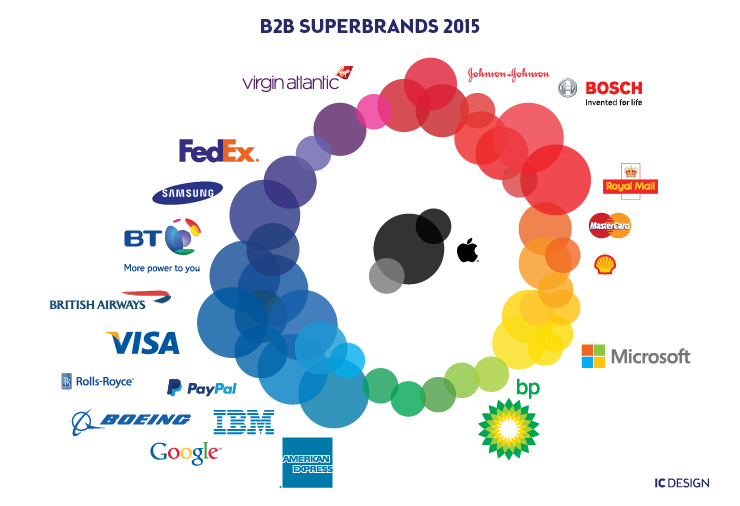Should your sales messages be loss framed or gain framed?

Marketers and sales professionals tend to be firm believers in making positive benefit claims about their product or service. But there is plenty of evidence to support the argument that loss framed messages can be more effective.
Healthcare marketing
Researchers have found a difference in consumer behaviour when making disease detection choices. Loss framed messages like “do this health test and reduce your chances of dying from this disease” was more effective than messages that focused on the positive like “do this test and live longer”. Conversely, experiments involving disease prevention choices found the reverse was true and that customer adoption increased when the messages was framed as a gain.
Using two sided messages
When prospects are involved or engaged with an advertisement, research shows that using both types of messaging is more effective than one or the other. This works best when there are three to five times more gain than loss related messages. So you should consider sprinkling in loss framed messages amongst your positive benefit statements
It boils down to what customer feel
At the end of the day it all depends on how customers are feeling in the context of your service. Their prior knowledge and experiences of companies like yours influence how they feel about the risks and returns to them. Their expectations shape how they receive messages and their willingness to engage. Hyperbole rich communications made by firms in sectors where customer expectations are low are less likely to work than those that reflect the customer reality.
What’s the learning?
The research is not clear cut but what is certain is that you should be making active choices about how to frame your messages. So next time you are reviewing this, think about designing a way to test which combination will work best for your business. Live market testing by producing variations of your sales material and seeing which works best is one way to do this. But customer insight research will pinpoint much more accurately how people feel and why which greatly improves your chances of finding what messages resonate best.
Francis Wyburd 2016
Five things new market entrants can learn from pick up artists

Pick up artists (PUA’s) use techniques that enable them to attract complete strangers very rapidly. Which if you think about it, is not dissimilar to what new entrants need to achieve in the market. So what techniques are they using that new market entrants can learn from? Here are five things they do:
Be distinctive
In nature ‘peacock-ing’ is a traditional way to stand. In crowded places, PUA’s rely on their appearance to get noticed often using outlandish clothing. On its own it’s not enough to seal the deal but it is very effective at catching the eye. Think about this when choosing your brand identity. But the emotional state you are in also has a powerful effect on other’s feelings – the more positive and dynamic your personal emotional frame, the more your presence will be noticed.
Communicate high value
The beliefs you express and the stories you tell position your character in the minds of prospects. Authenticity is key but the messages must demonstrate strength of character, authority and discipline. The company you keep, either in the room or in the stories you tell, also have an effect on building value especially if they make you seem valued by others. Coming across as “in demand” boosts scarcity value whilst being prepared to walk away, and sometimes doing so, demonstrates high self worth.
Build deep emotional connections
Enduring commercial relationships are built on the same principles as intimate ones: it’s all about emotional connectivity. PUA’s are effective at developing this, using both verbal and non-verbal communications to rapidly make a prospect feel a strong emotional bond. Asking good questions, exploring feelings, showing understanding, reading body language and knowing when to move to the next phase are important skills needed to succeed. But tonality, mimicry, body language and the use of words and subliminal commands are powerful influencers on decision making because they bypass the conscious mind.
Have an authentic purpose
What makes a business or person much more interesting to others is its reason to exist. And the braver, the more interesting or socially valuable this is, the more compelling it will be to others. And when a firm stands for something greater than financial enrichment, it helps deepen connections with others and make you seem more distinctive. Most firms don’t understand the power of purpose and the emotional effect it has on everyone who finds it motivating. But it really has to be authentic to be credible.
Stick to your guns
In the early days its easy to allow others to tell you what to do. Market experts, customers, partners, marketing agencies, everyone has an opinion. Now, listening is important, especially when it comes to working out your place in the world or your tactics for improving your position. But steadfastness and resolve, perseverance and belief in the mission are important signals to prospects. They frame your behaviours and make them seem coherent; they demonstrate commitment to a higher purpose and they communicate reliability and stability, all of which makes you more dependable and reliable to others. Which in turn allows prospects to commit to you.
Personally I find the PUA world seedy and distasteful but the psychological techniques they use are well established and proven at engaging others. So long as they are used with respect.
© Francis Wyburd 2016
Footnote: I came across the world of Pickup artists a few years ago when searching online for academic papers on non verbal communications. Albert Mehrabian’s work was a good starting point, Paco Underhill’s retail studies also but the seedy world of the pick-up artist showed how psychological and evolutionary economic principles were being used by them. As I live with six women already, I have no incentive to try these techniques out for myself.
How well does your business understand customers?

“There’s nothing you can tell me about my customers I don’t know already” is a refrain I hear a lot from entrepreneurs. As many of them have built up their business customer by customer, it’s hard to convince them otherwise. But as their businesses grow, so they need to delegate responsibility to others. And that’s where the problems start.
You see, it’s not about whether one person knows the customer or not; its whether everyone, collectively, knows their role in serving them and how they fit together. If they don’t all have a clear idea as to what value they are adding, the customer’s experience is harder to manage. And consistency is a major challenge for growing businesses, hindering growth and making the it harder for the team as well.
Growing a business requires teams to work cohesively, with clarity and focus. And the most valuable way to break down silos and get people working together effectively is to help them collectively understand what value customers seek and their individual role. Leaving it up to them to work it out or second guess their leader is not a viable strategy; exposing all parts of the business to the customer’s perspective and working through how each will contribute is a rapid way to build human systems that add value and improve everyone’s experience of the business. Now that is worth knowing.
Who can tell you about your brand, you or your customers?

I sat in front of a CEO of a very well funded tech start-up discussing their new technology’s positioning. The business had over 120 very well paid employees, had just attracted one of the most well know investors in the world to pump tens of millions into their big tech idea and she was brimming with optimism. But the warning signs were clear to me.
“So what are customers valuing” I asked? She looked at me as if I was mad. “Its the speed of our technology, that’s all it is. Ten times faster than our nearest competitor”. “If it’s that good, why are prospects so slow to convert” I retorted? Sub 10% conversion rates for a game changing technology suggested to me some other problem. “Were just not getting the ‘speed’ message across. I’m going to articulate what our brand means to customers this weekend” she said tartly and our meeting ended shortly after.
I think most businesses act like this. “I’ll tell you what my brand means to customers” is something I hear all the time. After all, new tech is hard to research. But she was wrong for two reasons. Firstly she operated in a highly competitive sector where the customer experience of the tech speeds they were promised by her competitors were appalling. So what ever rational argument she thought was important, she failed to grasp how the market would perceive her brand operating as it did in that sector. Secondly, a brand is only an idea of value in a customer’s head. Articulating what you think that is without any input from customers shows a breathtaking lack of understanding about how brands work. Worse, it cast her leadership skills in a poor light, something that had become clear when I spoke with her colleagues, as no one seemed to have a clear idea as to how to generate cash.
I do not predict happy times for her staff, her business or her investor.
Five resolutions for making 2016 your best year ever

-
Break down silos and start collaborating
The return you need to generate comes from customers, no where else. But customers don’t care about your departments, they care about outcomes. So if your people are not working together with this in mind, they’re not being very effective. To transform the way your people behave, put customer outcomes at the heart of what they do.
-
Change the conversations you have about customers
Stop talking about your product and services in isolation and start talking about what customers are hiring them for. Change the conversation from ‘Me’ to ‘We’. Eliminate the word ‘solution’ from your communications – it makes you look like you have no idea what problems you solve. And for heaven’s sake, stop targeting them, they’re not the enemy.
-
Get real about your place in the world
Stop assuming you know what they really value you for and find out. Take a long hard look in the mirror and see yourself as customers do. It’s a harsh process but an important reality check. (Hint: You’re not as important as you think you are). This’ll help you brush aside the hyperbole that makes your communications ridiculous and make changes that matter to customers.
-
Make friends in the market
There are lots of people and organisations out there who can help you grow. Sure, some may be competitors, some might want to steal your ideas but in amongst them all, there are amazing alliances to be struck and partnerships to be forged. You just need to know where to look. If you don’t know, your customers can help you.
-
Invest marketing resources more wisely
The marketing guru Peter Drucker once said, “There are only two things in a business that make money – innovation and marketing, everything else is cost.” What he didn’t say was that you have to throw money at advertising agencies. Some of the most effective marketing strategies involve people, a strategy marketing agencies can’t profit from. In one organisation I worked for, we ditched a £3m advertising budget and employed a team of people to develop our market. The market quadrupled in size, our market share doubled and profits trebled. Not a bad performance.
Happy new year and good luck in 2016.
Four ways B2B product names get in the way of marketing

B2B firms, become quite delusional when it comes to naming their products. But without knowing it, the names they choose end up impeding customer engagement and slowing their growth. Here’s five common mistakes companies make
- Unpronounceable names: Why would you pick a name that customers don’t know how to pronounce? Referrals are the bedrock of strong brands so making it hard for customers to speak about you when you’re not there is dumb. Make sure names can be repeated, orally or in written form, accurately.
- Oblique language: Obscure product or brand names are useful to create differentiation but make it hard for customers. Inside organisations they make a lot of sense but outside, without the budgets to create awareness, all this does is impede customer understanding.
- Overly long names: We live in a world of text speak, where economy of letters is now mandatory. Anything longer than three or four ‘shwah’s’ (syllable type stresses) is too long and customers will shorten it, even if you don’t. Think PWC not Price Waterhouse Coopers, BP not British Petroleum, IBM not International Business Machines and so on.
- Too many brand names: Unilever, one of the world’s largest brand owners finds managing 100 brands hard. However many smaller businesses feel the need to brand everything in the hope that it makes them seem bigger than they really are; many US firms trademark or service mark everything they do. In both situations, customers end up having to plough through long lists of names they’ve never heard of to try and find one that suits them. This creates an onerous burden on the company and confuses the hell out of customers.
Coming up with a brand and product naming system that makes sense to customers is not as straightforward as it seems. Organisations without the expertise to do this risk putting barriers between them and their customers. But as a simple guide, product/service descriptors, under one brand name, using plain english, is much more practical route for smaller firms to pursue.
How to avoid turning prospects into detractors without ever making a sale

I read an online advertisement from an online non-executive director agency inviting individuals to sign up. I decided to take this up to see what they were like and went through a lengthy form filling process. Until I got to the last page and was asked for money. Which was a surprise as they had failed to mention upfront that their’s was a fee paying service.
Not only had I wasted time but I had given up my details to an organisation which had failed to be honest with me. So you can imagine how I felt about them but it also increased my sense of distrust about online offers.
This seems to be an increasingly common problem across many types of service and one I encounter in both consumer and business markets. A retail offer of free delivery and promise that orders would get there the next day made me go all the way to the checkout before being told it would cost extra to achieve that goal; a free offer that ends up requiring credit card details to obtain it; an email with a subject line ‘special invitation’ when its an ‘early bird’ offer for an event. What all these have in common is that they waste the prospect’s time.
Its a fine line to tread. But being transparent about the cost of the service and what the counter-party should expect in return are pretty fundamental to trade. Fail to do so and you turn prospects into detractors without ever giving yourself a chance to make money and build a reputation.
How pro-social is your business?

A focus on self interest is often viewed as the only way to run a business. But customers (and people in general) do not think like that at all.
For the majority of people, self interest is often sacrificed in the interests of others, sometimes at a personal cost. For instance, tests performed by HMRC to encourage tax payments from late payers discovered that reminding them of the social benefits to schools or hospitals increased responses. Such behaviours run quite contrary to conventional economic wisdom, illustrating that social norms plays a powerful role in decision making.
Businesses would do well to understand this. Everyone involved with them – customers and staff especially – expect them to conform to social norms. In England that means they should pay taxes, adhere to the law, play fair, protect the environment and contribute to the long term good. However customers won’t actually say this or ever mention it in research but that doesn’t mean to say its not important. In fact, customer have specific expectations about every business sector they exchange with.
And come the day they find out that your business isn’t conforming and there’s a suitable alternate available, whatever loyalty they had will dissipate in a blink of an eye, destroying whatever brand value you had. Notwithstanding the legal and political ramifications… VW is a current example and hopefully Facebook, Google, Amazon et al when the UK government gets its act together. In fact, I think we should serve anti-social-behaviour-orders (ASBO’s) on companies that clearly don’t conform to social norms. There’s talk of doing to on taxpaying individuals – why not companies as well?
Commercial transactions connect customers to your business in ways that are not always obvious. The best way to find out what’s important is to understand what they expect from you in the context of the society in which you operate. Do you know what that is?
How disruptive innovations really work

There are many entrepreneurs who really believe their new shiny thing will disrupt the market. Their investors, their staff and they themselves would save everyone a great deal of pain and loss if they really understood what disrupting a market actually entails.
Real disruption is characterised by the following five traits which everyone needs to be clear about.
- Disruptive innovations enable non buyers to become buyers for the first time. This is often a function of a new price point or business model which opens up the opportunity for non buyers to access products. It takes time to convert non-users of a product category to start buying for the first time. You need to be patient.
- The value proposition that motivates these non buyers to buy is not appropriate for existing buyers in the market. in fact, it is shunned by them because it doesn’t perform the job they value offered by incumbent providers. Do not try and compete against the incumbent value proposition, you are unlikely to succeed.
- The distribution channels for disruptive innovations are different to the incumbent distribution channels. It takes time to find and build appropriate distribution partners and networks
- As more new buyers come into the market so economies of scale and widening distribution start to make the innovation attractive to low end buyers of the incumbent products. Improving the quality of your features and functions along the new value dimension is imperative to bring them round and accelerate growth
- Successful disruption is characterised by the new value system overcoming the incumbent one without the incumbent operators seeing it coming before it’s too late. Never alert the incumbent you’re going to disrupt their business. Just do so.
Take Kodak as an example. For a hundred years it dominated the world of camera film. Sure Fuji did well in the high end professional segment but Kodak dominated the mass market for film around the world. When camera phones emerged with their not very good image quality, well before smart phones had become ubiquitous, it enabled children and teenagers to take pictures for no cost. For them, the cost of developing a film was far too high for most to afford without their parents paying. Suddenly they had a tool for creating media they could control without their parents involvement. Ironically, Kodak owns many valuable patents for digital imaging but failed to predict the pace of change which happened within a generation. Apple, Samsung etc had eaten their lunch before they realised it and built and entirely different value network around digital devices.
The most important factor for success is that you need a deep understanding of people, their unserved needs and their incentive to start buying (and using) your innovation. Vision and deep pockets alone is not enough.
Six reasons why hiring market experts fails

Everyone wants to work with the best people. But time and again innovative young companies fail to grow because they hire market experts who don’t deliver the goods.
A common story goes like this: You’re entering a new market with your innovative product. You get introduced to someone with twenty years experience of that market who (seems) to know the major players. So you hire them to open up doors and their networks and pay them a hefty day rate + performance bonus + share options because they promise so much. In the first few months you get to meet some big blue chip clients and feel really optimistic but over the following months the opportunities tail off as the address book is exhausted but few if any conversations materialise into business. A year later you’ve invested a great deal of time supporting them but have little to show for it for your £9K. You part ways and they move on to the next, lucrative assignment.
Sound familiar? Hiring market or product experts for sales, marketing or business development roles is much more complicated than it seems. Here’s six reasons why:
- Market experts have no experience of your new proposition, only their old one. And however they were good at the latter, this is no reason to think they can repeat their success.
- Their networks and contacts were built up in a previous era. These are unlikely to be early stage buyers of new innovations but they’ll enjoy hearing about it and wasting your time.
- Market experts have a view of the world based on their life experiences. As a consequence, they filter out the most important feedback coming from the market if it doesn’t support their world view. If you have a disruptive innovation, your ability to learn about your product’s place in the world will be much diminished as a consequence.
- Market experts with large egos are less likely to collaborate, share valuable information or become part of your team. You discover managing them and maintaining discipline is very hard if not impossible.
- Hiring people with skills but not the values is always a problem. They will irritate you and your team and undermine your culture
- Paying large day rates to pseudo employees does not guarantee performance; often it reduces it.
The number one challenge for new products is to find a profitable place in the world. Only customers know where that is and only organisations equipped to listen can reduce the chances of failure. Successful entrepreneurs with a clear vision and strategy should hire people who share the values, commit to the strategy, collaborate with everyone, share learning and most importantly, be accountable for performance. Just being a market expert is simply not enough.


 Follow
Follow